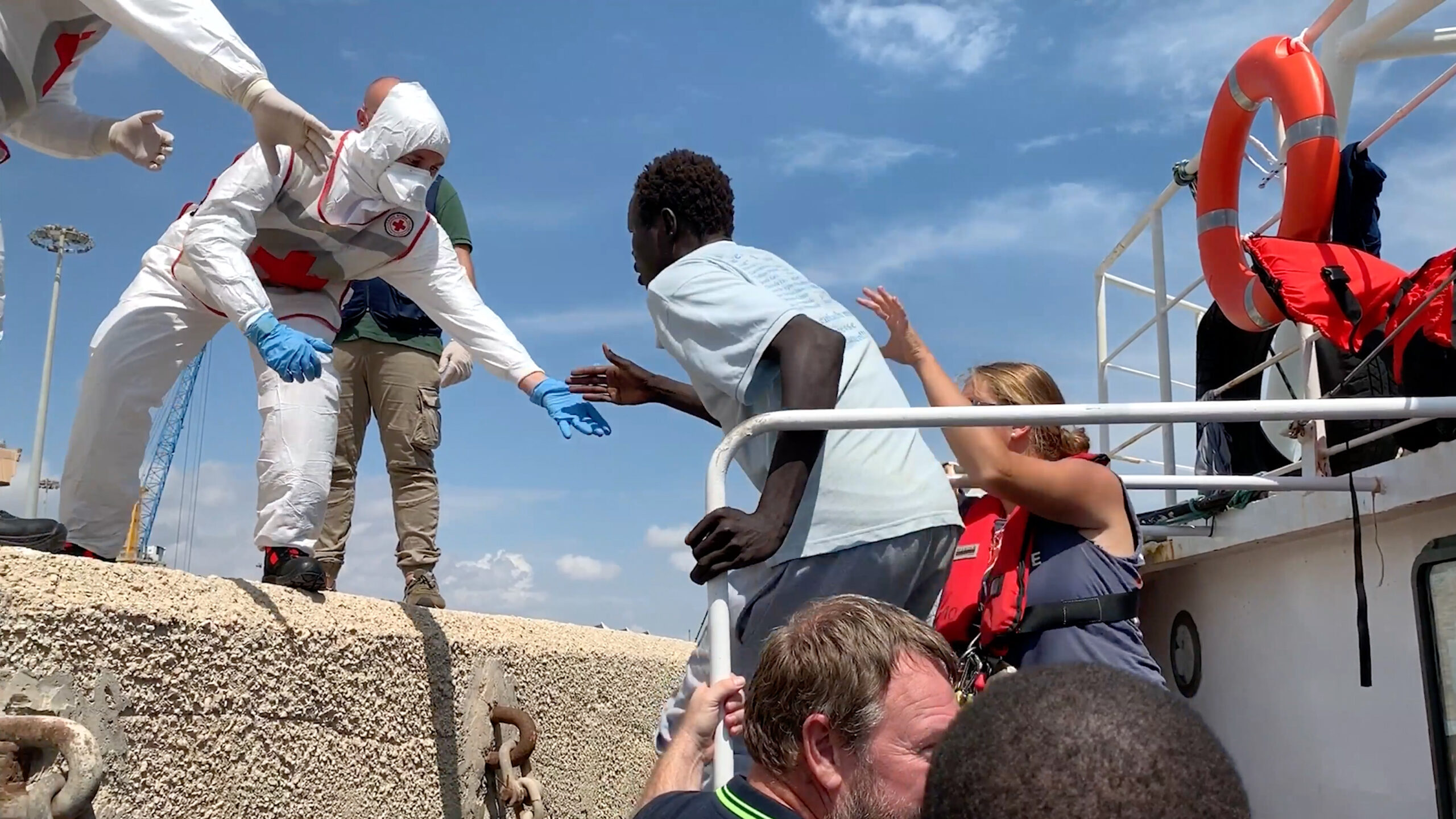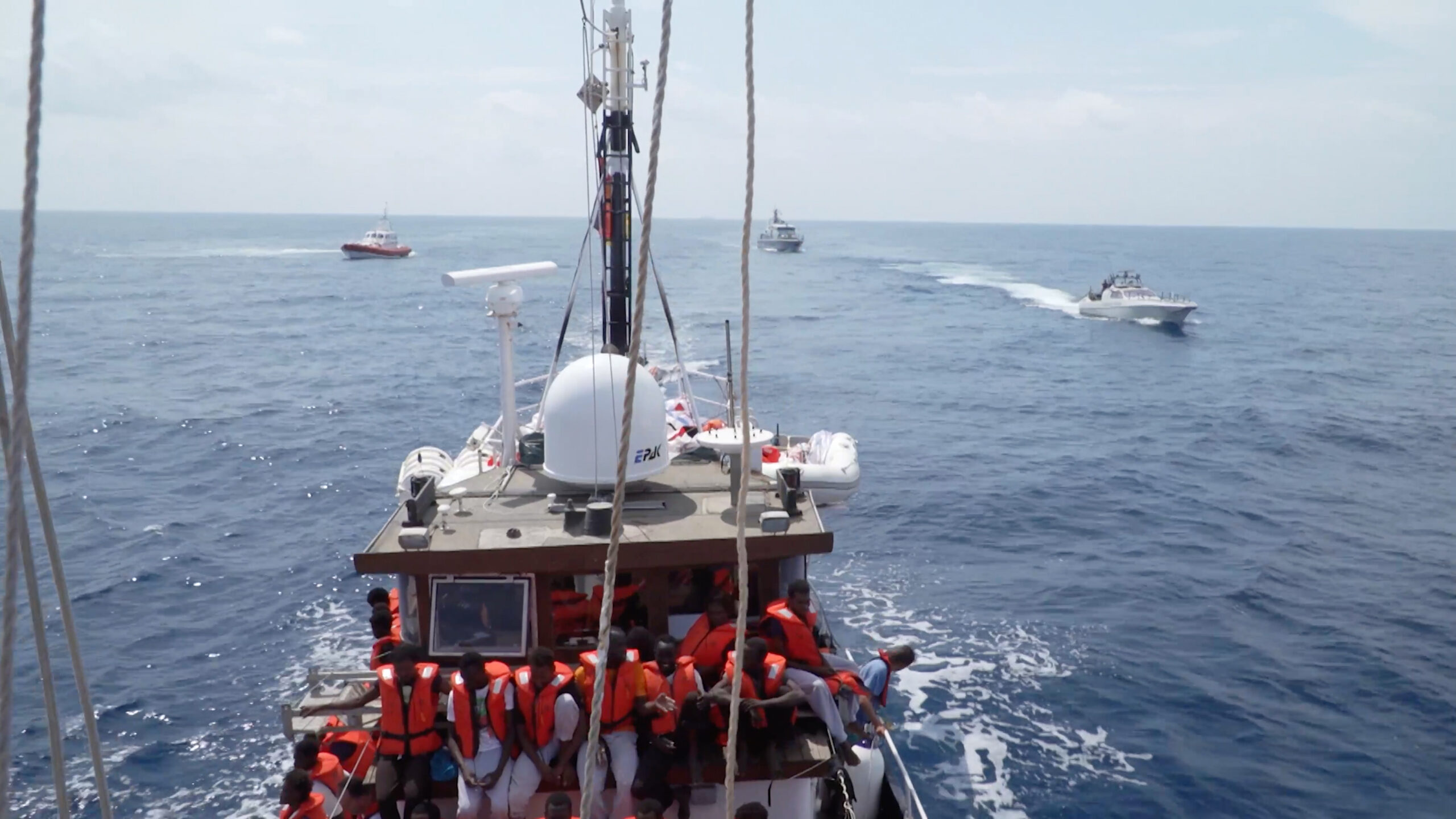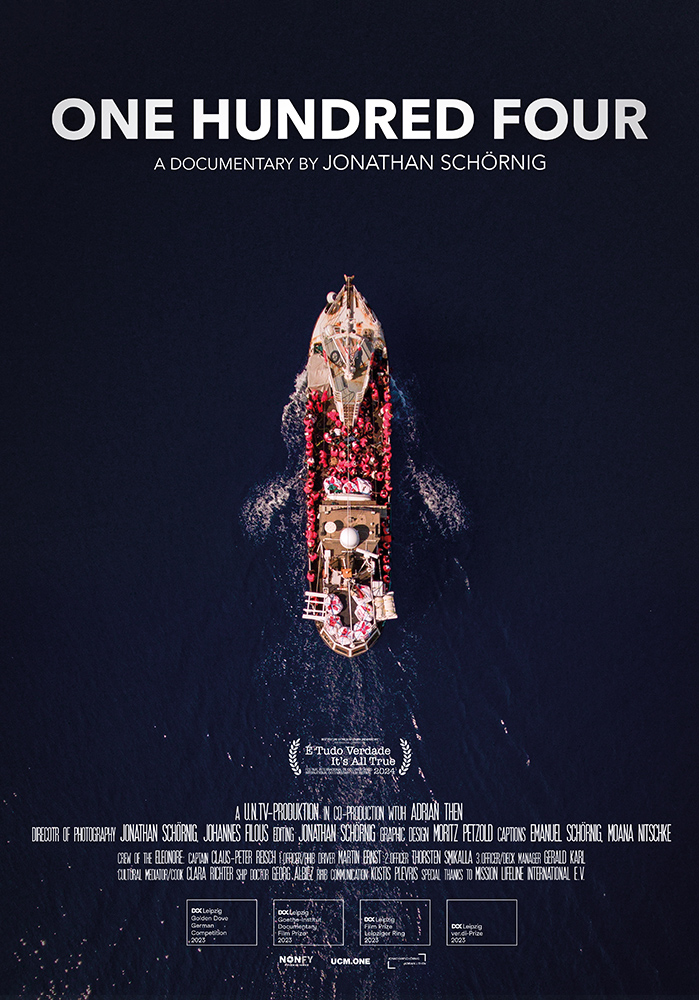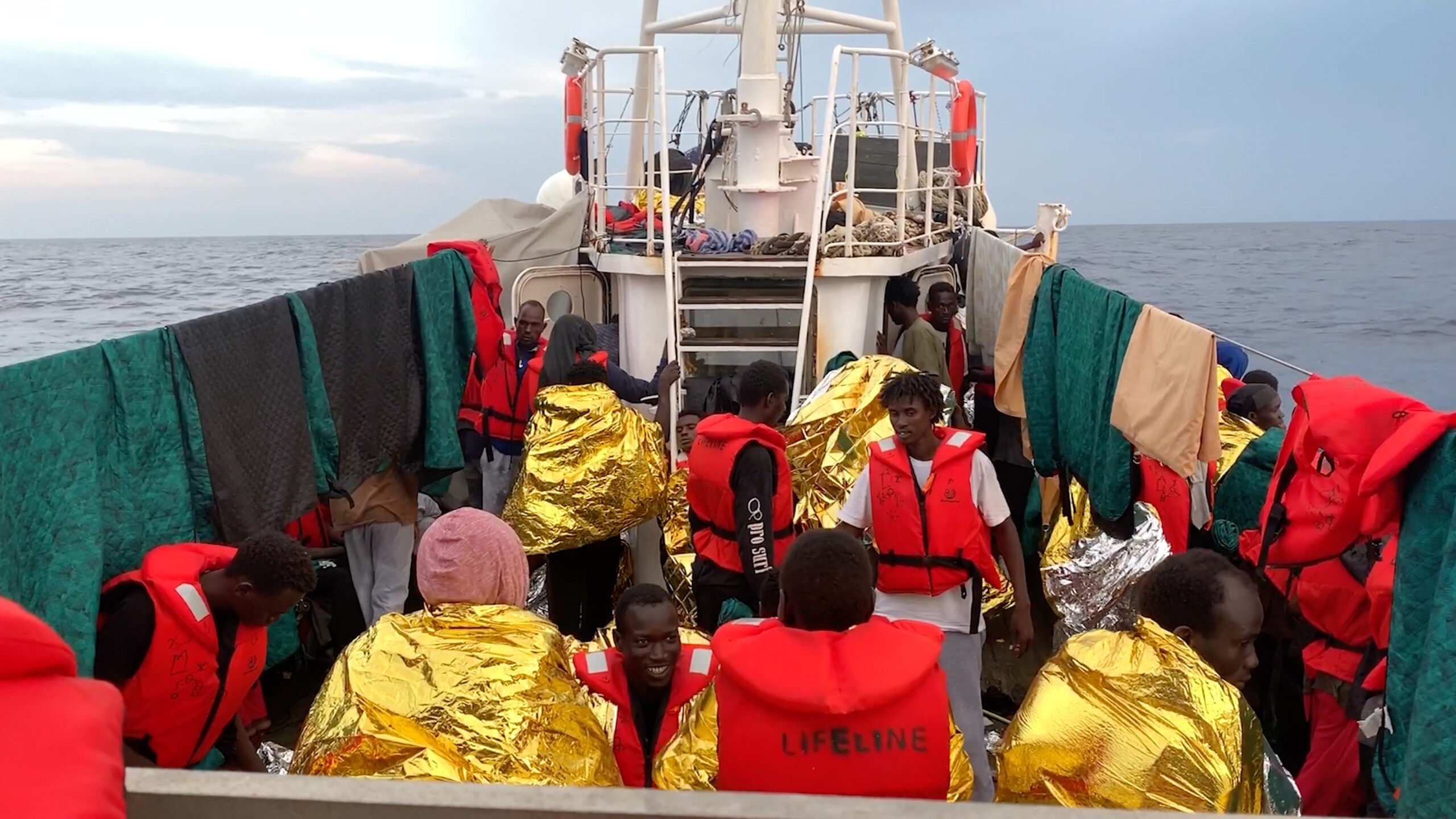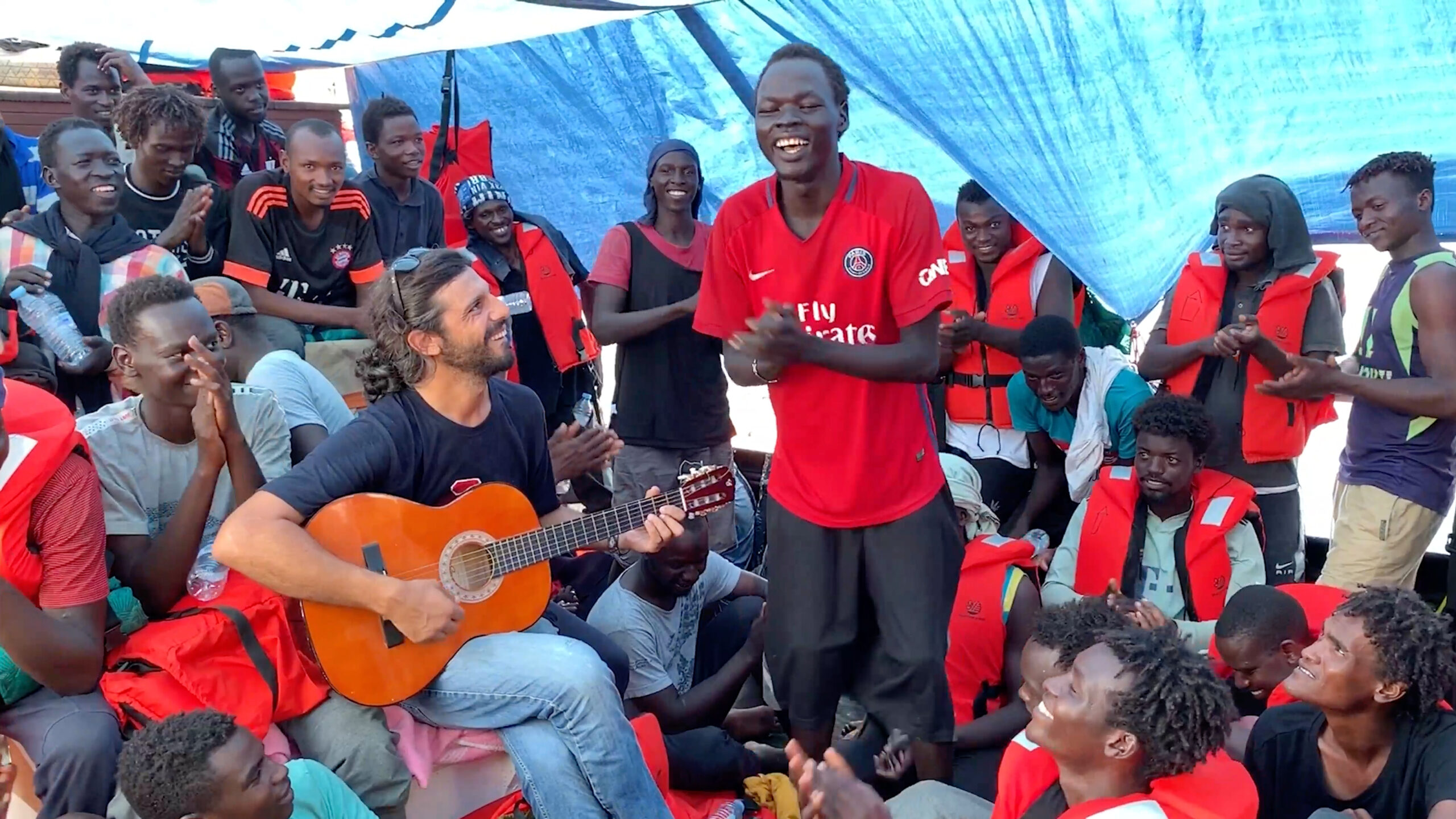Jonathan Schörnig’s Oscar 2025-qualifying documentary “One Hundred Four” (German title: “Einhundertvier“) opens today in German cinemas nationwide on the NONFY Documentaries film label. The film team will be guests at the Wolf Kino in Berlin this evening to present the film on its theatrical release. An extensive cinema tour will follow in the coming weeks with many special events and various guests on the subject of the private sea rescue of refugees in the Mediterranean.
This year, the film won the main prize at the “It’s all true” film festival 2024, the leading documentary film festival in South America, and has thus qualified for submission to the 2025 Oscars. The film received four awards at its world premiere at Dok.Leipzig 2023, including the Golden Dove.
The film provides an insight into a rescue operation in the Mediterranean in which 104 people are saved from distress at sea. Jonathan Schörnig was struck by the dilemma of the lack of awareness of these rescue operations and decided to bring a sea rescue to the screen as a real-time documentary to show how agonizingly long it takes to rescue many people from a sinking rubber boat. The film follows the rescue operation step by step with several parallel cameras.
Summary
When the Libyan coastguard approaches the German sea rescue boat Eleonore, a hectic rush breaks out among the 104 refugees and the routine rescue operation has to be speeded up. How a sea rescue can take place is beyond imagination. The real-time documentary “One Hundred and Four” brings this dramatic situation closer. The film shows how agonizingly long it takes to rescue 104 people from a sinking rubber dinghy. Person by person, step by step, the action is accompanied by several parallel cameras.
The situation comes to a head when the Libyan coastguard appears. The rescued people and the crew wait for days on the high seas, as no Mediterranean country allows them to dock. Only after a terrible storm does the ship reach a European port.
Despite media evidence, it remains incomprehensible to those who have not experienced this situation themselves: “Why are hundreds of people in mortal danger being denied help and the civilian helpers even threatened and criminalized?”
Interview with director Jonathan Schörnig
“How did the movie come about?”
“I was on this rescue mission as a journalist in 2019. The footage I shot was also used to make several reports for MDR and I realized afterwards that I hadn’t quite finished with the topic yet and that the raw material had a lot more to offer. Whenever I watched excerpts from the raw material, I realized that I myself stayed with it for a very long time and that I found the rescue operation itself exciting.
When a rescue like this is shown, it’s always heavily compressed by the editing. I thought that was the best way to show the whole thing, uncut. So that the viewer can experience and understand it. We were only able to view the material properly through the montage in tile mode and noticed in the edit how the tension is carried through the film.
I think that people who have seen the film also get a bit of a feel for what it’s like to be involved in a rescue operation like this.”
“Why did you set up and install six cameras?”
“I knew that I wouldn’t have many opportunities to adequately document all the situations during the rescue. That’s why, together with Johann’s Filous, I thought about where we could install cameras so that we wouldn’t miss anything. It was also important for me to document what was happening on the bridge. Johannes was in the speedboat and I stayed on board. Together with the other cameras, we had a very good overview.”
“How did you feel on board?”
“You’re part of the process the whole time and it’s difficult to be a neutral observer. For Johannes and me as journalists on board, it wasn’t easy to concentrate on the documentation.
We are part of the whole thing and we eat and sleep on the same ship, but we still have a duty of neutrality.
Because we were few crew members and only nine instead of twelve, we had to subordinate ourselves to the ship’s daily routine like everyone else.
The question that was on my mind shortly before setting off for the SAR zone was: What happens if someone drowns in front of me? Do I film or do I intervene and try to save them? I didn’t make a clear decision beforehand, but I had a feeling that if something like that happened, I would intervene in the situation and leave my observer position.”
“What memories do you have of the people you rescued?”
“There were a few that stuck in my mind. For example, Fahad, who became a kind of spokesman for the group and always presented us with solutions when there were problems. In general, we were very lucky with the rescued people. Although they came from different countries and didn’t know each other, they were all very disciplined and patient.
We had a day when we wanted to play different board games together that we had on board. After a few minutes, I noticed that there was a disturbance in one group and playing cards were being thrown overboard. After Gerald Karl (deck manager) calmed the situation down, we put Fahad in charge and left the deck as a crew. After a 5-minute discussion among ourselves, Fahad came to us with all the games and said that because it hadn’t worked out, they had decided that they didn’t want to play any more and handed Gerald the neatly packed games.”
“What was the mood like after the rescue?”
“Right after the rescue, everyone was very euphoric. However, the adrenaline didn’t wear off until the Libyan coastguard was no longer chasing us. First, everyone was given water and Georg Albiez (the ship’s doctor) took care of the very weak cases. The next day there was a “consultation hour” where all the rescued people came to see the doctor and injuries were documented and wounds treated.
Unfortunately, we couldn’t find the lifeboat we were actually looking for.”
Press reviews
“One Hundred Four” plays the strongest trump card of documentary cinema when it shows (uncommented and largely uncut) what hardly anyone can see with their own eyes. At best, it creates empathy.” (Süddeutsche Zeitung)
“Grandiose documentary film.” (Der Freitag)
“A cinematic cabinet piece.” (Leipziger Volkszeitung)
“In real time, Jonathan Schörnig documents the sea rescue of 104 people in the Mediterranean. Parallel montages from up to six camera angles illustrate the drama of the operation with all its dangers and challenges in an unadulterated and highly haunting way.” (Cinema [Five Stars]):
“It is precisely through the interplay of perspectives that the film creates an authentic clarification of the events. It is a supposedly simple but sophisticated concept.” (EPD)
“Jonathan Schörnig’s documentary does not discuss anything at all. It shows – mostly in real time – how a sea rescue is carried out from the rescuers’ point of view in purely technical terms.” (Der Tagesspiegel)
“A documentary film in its purest, purest and most authentic form, which needs no dramaturgical post-processing. The situation alone is dramatic enough because it is so delicate and could lead to a catastrophe at any time.” (Kino-Zeit)
“The viewer becomes the director. The split-screen aesthetic conveys a wealth of different information, moments and emotions.” (Filmdienst)
“How a sea rescue can take place is usually beyond the imagination. The real-time documentary “One Hundred Four” brings this dramatic situation closer.” (Münchner Merkur)
“One Hundred Four” succeeds in evoking an oppressive, emphatic feeling and conveying an authentic impression of a life-threatening sea rescue operation in the Mediterranean that cannot be surpassed in realism.” (Arthouse Cinema)
“One Hundred Four” can be seen in the following cinemas in Germany and elsewhere:
| Berlin | Kino Neue Zukunft |
| Wolf Kino | |
| Chemnitz | Metropol |
| Dresden | Schauburg |
| Erlangen | Lamm – Lichtspiele |
| Freiburg | Kommunales Kino |
| Gauting | Kino Breitwand |
| Hannover | Kino im Sprengel |
| Cologne | Traumathek |
| Landsberg | Olympia Filmtheater |
| Leipzig | Luru in der Spinnerei |
| Munich | Werkstattkino |
| Ratzeburg | Burgtheater |
| Rostock | Lichtspieltheater Wundervoll |
| Weingarten | Kulturzentrum Linse (Kino) |
| Würzburg | Central Programmkino |
More information about the movie: One Hundred Four
More information about the film label: NONFY Documentaries


